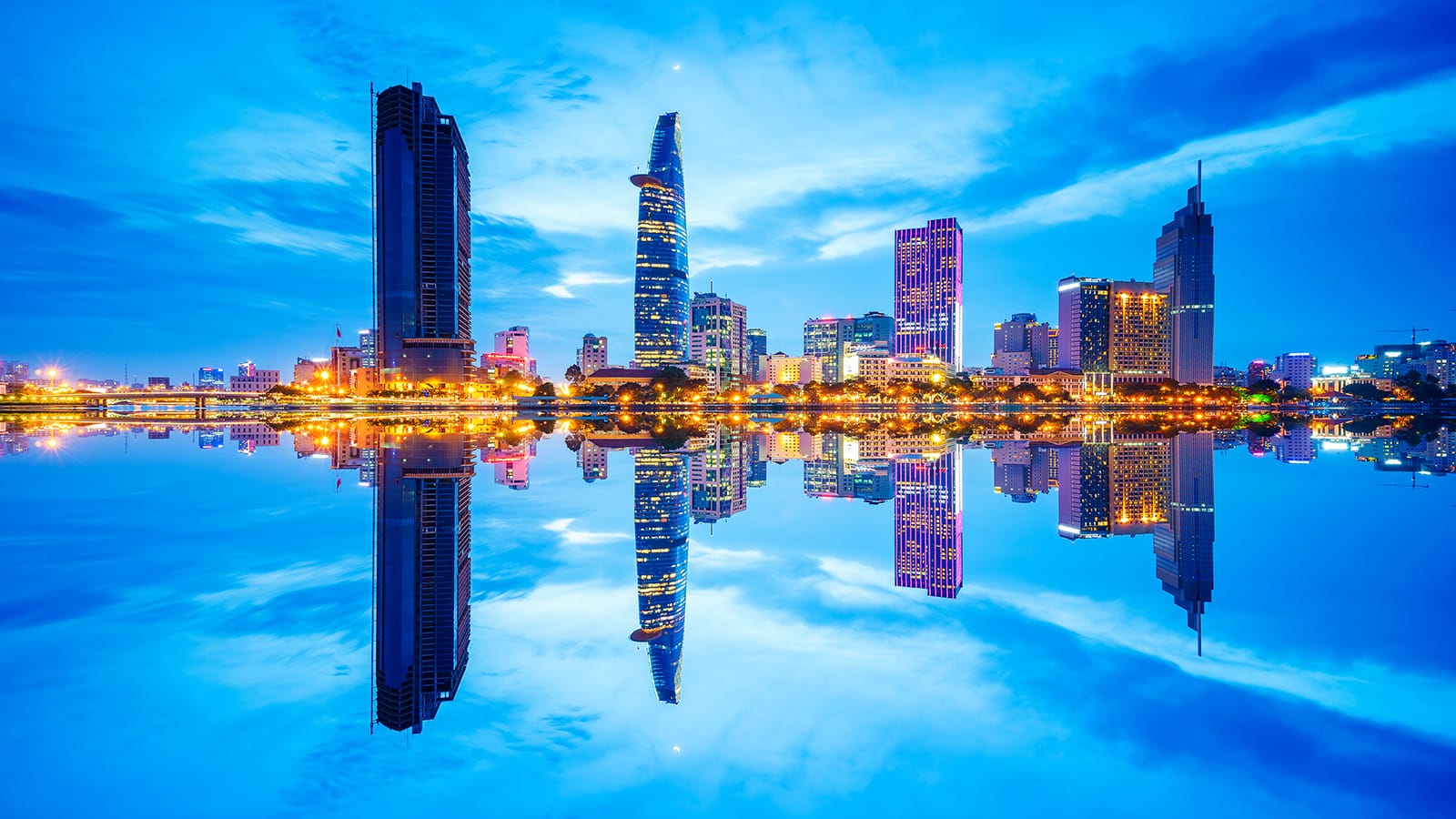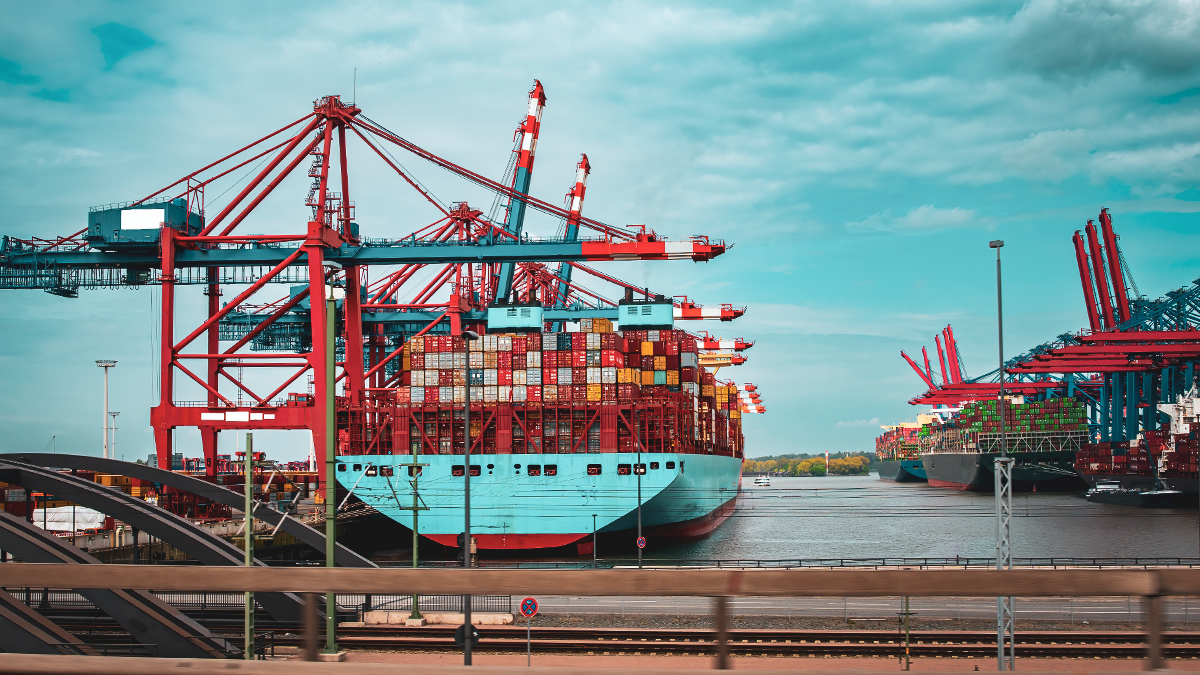Table of contents
Vietnam is the third-largest market in Southeast Asia. It also has one of the fastest-growing economies in the world. These are just two reasons why foreign investors want to invest in Vietnam. Below we list the top reasons why you should invest in Vietnam.
#1 Strategic location
Vietnam is strategically located in the center of Southeast Asia. It is also worth noting that it shares borders with China. It has a long coastline and is close to many international shipping routes. These make Vietnam a prime location for trading.
Additionally, Vietnam’s major cities are also strategically located. You will find Hanoi in the north and Ho Chi Minh City in the south. Having major cities on opposite ends of the country makes it easy to do business within and outside the country.
But business opportunities aren’t limited to Hanoi and Ho Chi Minh City. There are also many business opportunities in Da Nang.
#2 Trade agreements
Vietnam has several trade agreements that make it easy to do business in Vietnam. These trade agreements also promote the country’s economic growth.
Certain trade agreements, like those under the World Trade Organization, make it easier for foreign investors to set up businesses in Vietnam. Vietnam also offers tariff reductions through trade agreements, such as in the case of the Free Trade Agreement with the European Union.
Other trade agreements and relevant memberships include the following, among others:
- Member of ASEAN and ASEAN Free Trade Area (AFTA)
- Bilateral Trade Agreement (BTA) with the US
- Trans-Pacific Partnership (TPP)
- Free Trade Agreement with Japan
- Free Trade Agreement with Korea
#3 Doing business is getting easier every year
The World Bank ranked Vietnam 70th out of 190 economies in its Doing Business 2020 report. The World Bank gave Vietnam a score of 69.8, 1.44 points higher than the year before.
A significant area of improvement involves the process to pay taxes. Vietnam’s General Department of Taxation upgraded its IT infrastructure. Because of this, businesses are now able to settle taxes much faster than before.
Investors can expect further improvements in doing business in Vietnam. This is especially true as the government continues to make processes easier.
#4 Openness to foreign investment
Many emerging markets have restrictions on foreign ownership in certain industries. However, in Vietnam, most industries allow foreign direct investment (FDI). Additionally, the government made changes to regulations. The government also put incentives in place to encourage foreign investment. Such incentives include:
- Lower corporate income tax rate or exemption from the tax for several industries
- Exemption from import duties on specific goods like raw materials
- Reduction or exemption from land rental or land use taxes
Investors can enjoy the above incentives by investing in preferred industries. The Vietnamese government also offers incentives to businesses set up in certain locations. Our consultants can advise you on how to make the most of the incentives offered to investors. Get in touch with Emerhub and we will help you set up your business in Vietnam.
#5 Relatively low setup costs
There are no minimum capital requirements for most businesses in Vietnam. However, you need to present a reasonable amount relevant to your planned business. Your capital must be able to cover costs to set up your business. In addition to that, your capital must also be able to cover operating expenses until your business becomes self-sustaining.
Our consultants at Emerhub can advise you on the cost to set up and operate your business in Vietnam.
#6 Stable GDP growth
Vietnam has one of the fastest-growing economies in the world. Due to economic reforms in 1986, Vietnam has seen stable economic growth over the last few decades. In 2000, Vietnam was the 60th largest economy in the world and rose to 44th place by 2019. Projections estimate that Vietnam will be the 20th largest economy by the year 2050.
Since 2000, GDP growth in Vietnam averaged 6.5% every year. In 2020, Vietnam’s economy still shows growth at about 3% despite the pandemic. According to the Vietnam Institute for Economic and Policy Research (VERP), the GDP growth could reach 3.8% by the end of 2020.
#7 Infrastructure developments
The Vietnamese government is continually making improvements to the country’s infrastructure. The government is putting funds towards building and improving expressways, airports, and ports. Easy transportation and shipping will make doing business in Vietnam easier. Such projects also create opportunities for foreign investors to work with the Vietnamese government.
Expressways in Vietnam
Vietnam has many expressways that ease travel between regions and even neighboring counties.
Below are some notable expressways in Vietnam.
- Hanoi-Lang Son expressway. This is part of the system of expressways connecting Hanoi to different cities in the north. This connects Hanoi with the International Border Gate in Lang Son province. There are also plans to connect this to China’s Nanning-Youyiguan Expressway.
- Ho Chi Minh City-Moc Bai. Similar to the previous item, this expressway also connects Vietnam to neighboring countries. There are plans to connect the Ho Chi Minh City-Moc Bai expressway to Cambodia’s Phnom Penh-Bavet Expressway.
- North-South expressway. This began construction in 2019. Once completed, this expressway will connect Hanoi in the north to Can Tho in the south. The highway will also run through Da Nang and Nha Trang.
Airports in Vietnam
Vietnam has three main international airports and one planned international airport:
- Noi Bai International Airport. This is Vietnam’s second busiest airport and served over 29 million passengers in 2019.
- Da Nang International Airport. Da Nang International Airport is an important international gateway for Vietnam. It is in Da Nang, an important port city, and also a hub for IT companies.
- Tan Son Nhat International Airport. This is Vietnam’s busiest airport. It served nearly 36 million passengers in 2019. There are plans to expand this airport to accommodate the increasing number of passengers.
- Long Thanh International Airport. Construction will begin in May 2021. The airport is expected to be operational by 2025. It will serve Ho Chi Minh City and will be able to serve 100 million passengers annually.
Ports in Vietnam
Vietnam has a long coastline and many ports. These are some notable ports in Northern, Central, and Southern Vietnam.
- Hai Phong. The Lach Huyen International Port is particularly notable for the Haiphong International Container Terminal (HICT). The HICT is the first deep-water terminal in Northern Vietnam and can accommodate larger ships. The terminal opened in 2018 with the completion of the second phase expected in 2020.
- Da Nang. Ports in Da Nang handle most of the central region’s traffic. The port not only serves freight and cargo. Cruise ships also dock in Da Nang.
- Vung Tau. Vung Tau Port has a group of seaports and is one of the sea transport hubs of Vietnam. Recent developments to this port include new harbors to serve an oil refinery and another for passenger transportation.
- Ho Chi Minh City. The city has a network of ports with the Saigon Port being the fifth largest port in ASEAN. Cat Lai, a terminal in Ho Chi Minh City’s port area, is one of the biggest and most modern terminals in Vietnam.
#8 Growing population
Vietnam has the 15th largest population in the world with over 97 million people. Over the last five years, Vietnam’s population increased by an average of 1%. Worldometers predicts that Vietnam’s population will reach 104 million by 2030. Steady population growth indicates a promising future for its labor force.
Population growth also often comes hand in hand with urbanization and economic development. Existing cities will become crowded as rural migrants move there. This will encourage urbanization in other parts of the country.
#9 Young and educated workforce
According to Worldometers, the median age in Vietnam is 32.5 years old. Additionally, per the World Bank, about 70% of Vietnam’s population is under 35 years old. Vietnam also has the highest labor force participation rate in Asia at 76% according to Trading Economics.
The Vietnamese government also allocates about 20% of its annual budget towards education. As such, Vietnam has a young and highly educated workforce.
#10 Competitive labor costs
Despite yearly increases to minimum wage rates, Vietnam still has one of the lowest labor costs in Southeast Asia’s top emerging markets. In addition to that, minimum wage rates in Vietnam remain less than half of what the wages are in China.
| Country | Monthly minimum wage |
|---|---|
| China | USD 363 |
| Indonesia | USD 287 |
| Philippines | USD 332 |
| Vietnam | USD 192 |
*Values converted using exchange rates at the time of writing
Due to rising labor wages in China, many manufacturers are looking at markets with lower labor costs. With its low labor costs and a stable yet growing economy, Vietnam is a more cost-effective alternative to China. Many investors are looking into setting up manufacturing companies in Vietnam. Other investors, meanwhile, are moving manufacturing from China to Vietnam.
Hire employees in Vietnam.
Recruit top talent in Vietnam with Emerhub as your employer of record. No need to set up a local company.
#11 Vietnam is the next China?
Over the last three decades, Vietnam rose from being one of the world’s poorest countries to a lower-middle-income country. Vietnam’s economic development is comparable to that of China’s a decade ago.
Additionally, with rising labor costs in China, many industries are moving production and manufacturing operations to Vietnam. Manufacturing of textiles and clothing is booming in Vietnam. The manufacturing of high-tech products is also rising in the country.
#12 Swift government response to COVID-19
Thanks to the government’s swift response to COVID-19, Vietnam was able to keep the economy open. Government regulations to contain the virus have kept infection numbers low in Vietnam.
These measures made it possible for Vietnam’s businesses to reopen by April following a lockdown in March. Being able to bounce back quickly has made Vietnam even more attractive to investors. The government of Vietnam has shown that it has the ability to handle crises. Economic expansion slowed in the second quarter of 2020, but Vietnam was still able to show some slight growth, unlike many other countries.
These are just some of the reasons why you should invest in Vietnam. As with all investments, it’s important to assess every aspect of your planned business. With the help of local experts like Emerhub, you can start a business in Vietnam easily. Get in touch with our consultants by filling out the form below or send an email to [email protected].







